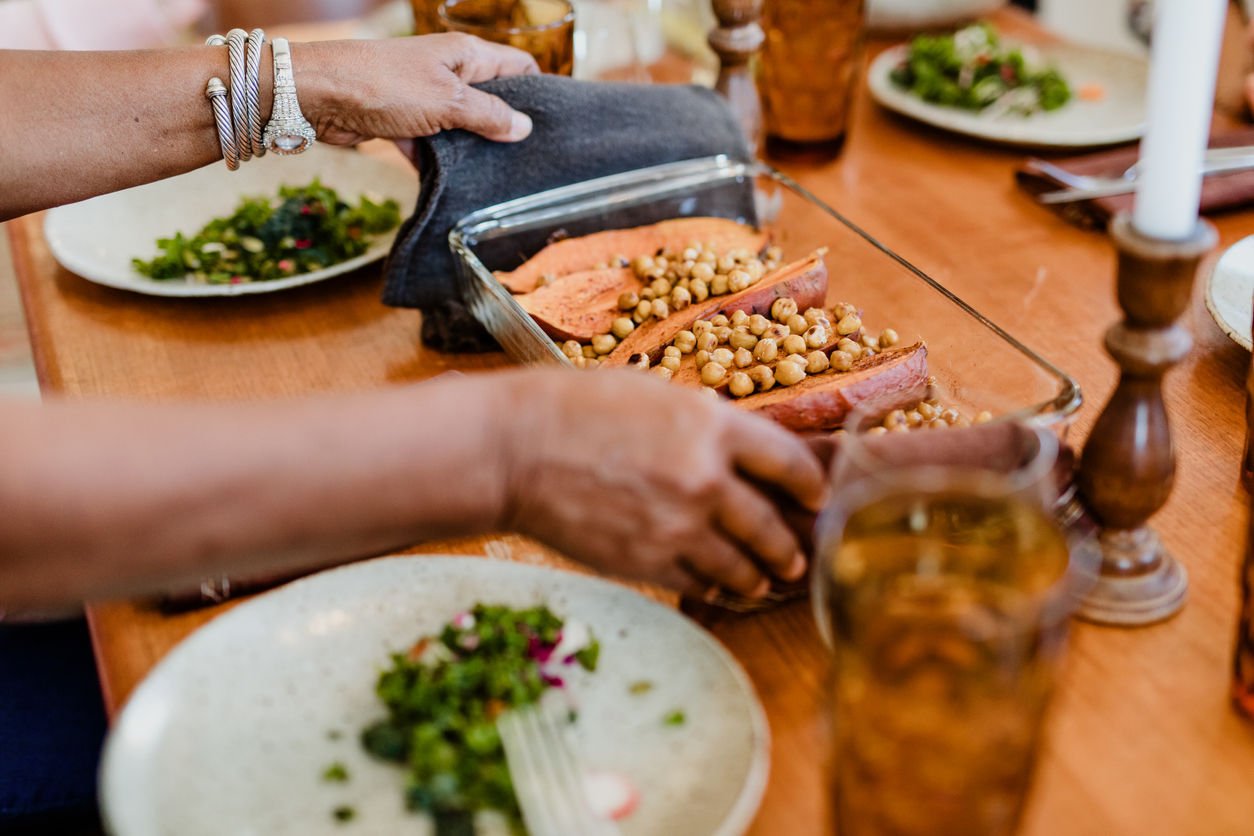Changing rules around the dinner table
Many of us grew up with strict table manners, but those days seem to be long gone. Should we be bringing old table traditions back?
By Judith Maizey

Sitting down at the dinner table every night to eat your meal of meat and three veg was a given for most of us when we were young. You’d eat your meal and chat about what everyone had done for the day.
In many instances, children were not allowed to leave the table or have sweets until they had eaten their main course. Rightly or wrongly, that’s not the case for a lot of families today.
People have extremely busy lives and with young ones involved in a lot of after-school activities, families are lucky to have dinner together in front of the television, let alone at the table.
Grabbing a takeaway on-the-go is also common as parents race to get their children from music lessons to hockey practise and softball games after school and on the weekends.
Mother of two young adults, Cassandra Downey, recalls how every night when she was growing up her family of six would sit around the dining room table.
“We’d have classical music playing in the background, candles on the table, and my mother would make things like dolmades on a weeknight which, upon reflection, was an extraordinary effort,” she says.
“And we would have these robust conversations (over dinner) and even as we got older when we were able to drink red wine...so much transpired over the dining room table.
“We’d also have breakfast every morning at the dining room table. My mother would do lamb’s fry and bacon. My parents had a business to go to. I mean, who has time to do that anymore?”
Cassandra said she still caught up for meals like lunch with the extended family, but admits that when her children were still living at home and got older, eating a family dinner together at the table became less and less.
“When they were little, we sat at the table every night with the television off—how else can you teach them table manners?” she says.

“I used to say to my son ‘if you can’t sit with your back straight and use your cutlery properly you’ll never be invited to have dinner with the Queen’.”
Now that her children are 19 and 20 and no longer living at home, Cassandra says she still likes to have dinner with them at least once a week.
“I find we talk for a lot longer than we actually eat. The meal can be finished but the conversation keeps flowing and that’s what’s lovely about sitting at the table,” she says.
Christmas was at my house and I set a proper table with champagne glasses, white wine, red wine glasses, water glasses, the correct cutlery and napery, the whole box and dice. My beautiful son actually did a toast before we started... about how much he loved the family and how he would never choose to be around another family on Christmas Day—and that all happened around the table.”
Cassandra says those who eat meals in front of the television are missing out on their family’s lives. “How do you find out about the funny things that happen throughout the day if you’re watching television? You’re not communicating at all and you’re not even mindfully eating, you’re just eating.”
Australian Finishing School Director Amanda King shares a similar childhood dinner table experience to Cassandra. “My mother served dinner at the table with a white damask tablecloth. We turned the TV off and put music on. We helped set the table with cutlery and glassware and napkins so we actively helped,” she recalls.
“It was important to not start eating until everyone was seated and we also needed to wait until everyone had finished their meal as a sign of respect.”
Cassandra says while those rules were challenging as a child they were still very much instilled in her today. “More so around the importance of enjoying and having a meal together as a sign of love and quality time together,” she explains.

Ms King's dinner table tips
- Turn phones to silent and keep them away from the table
- Teach children to use the toilet and wash hands before eating
- Wait for everyone to be seated and have their meal before starting
- Chew food quietly with your mouth closed
- Make sure your elbows are not on the table and ensure you are close enough to the table so food does not drop on the ground or your lap
- Wait until everyone is finished eating before leaving the table.
A certified and accredited etiquette
expert, Ms King teaches children as
young as five and adults of all ages from
all cultural backgrounds.
“From the cohort of students I have taught, dinner time is somewhat the only meal of the day where a family sits together,” she says. “Amongst friends and younger families or couples this number decreases dramatically to less than 40%.
“As a result of not sharing a more formal meal arrangement, the etiquette around this and its formalities have disappeared. We end up having many people anxious when they do need to use these skills and be sociable.
When one cannot eat properly or converse (at the dinner table) without causing attention of the wrong type as a child or adult, it is embarrassing and not a good state of affairs.”
After 15 years of teaching, Ms King says she has noticed there were two generations of adults who were not well-equipped to show proper manners and etiquette at the dinner table or at meals in general.
Family meals are a rare experience for many families these days when one or both parents may be working. Meals on the go or the dynamic of having a meal at a restaurant has become the norm,” she says. “However, simple etiquette rules still apply and most people should be aware that this is a great time to demonstrate good manners and an example to children on behaviour, respect, and gratitude.”
During the Renaissance, Catherine de’ Medici, the Italian-born queen of France from 1547 until 1559, is credited with helping to popularise the use of a fork when eating. Prior to a fork, people simply speared their food with a sharp knife and ate off the knife.
One of the first American homes to have a room specifically for dining was Thomas Jefferson’s Monticello house built in 1772. The dining room, with the dining table at its centre, then began to be incorporated into wealthy homes across the country.
A progressive dinner (US) or safari supper (UK) is a dinner party with successive courses prepared and eaten at the homes of different hosts.
The first official ‘TV dinner’ was developed by C.A. Swanson & Sons of Omaha, Nebraska, and introduced to the market in 1954. It included turkey, gravy, cornbread stuffing, sweet potato, and buttered peas. It cost US$0.98.
Deipnophobia is the fear of dining with others, dinner conversations, or talking while eating. People with this phobia tend to eat alone in silence and when dining with others expect them to eat in silence.

This article is featured in the Autumn 2023 issue of National Seniors Australia’s quarterly member magazine, Our Generation.
Become a member today and receive four free hard copy issues of Our Generation (valued at $39.80) a year as part of your membership, along with exclusive discounts, competitions, branch membership and more!
Your membership directly funds our advocacy and research work that benefits older Australians including fixing pension poverty, tackling health care costs, and improving aged care.




